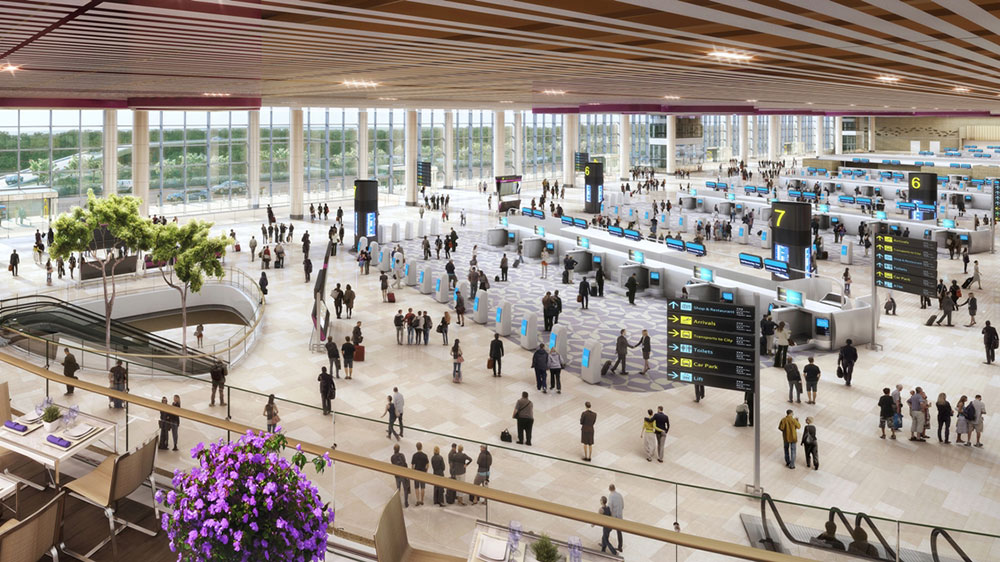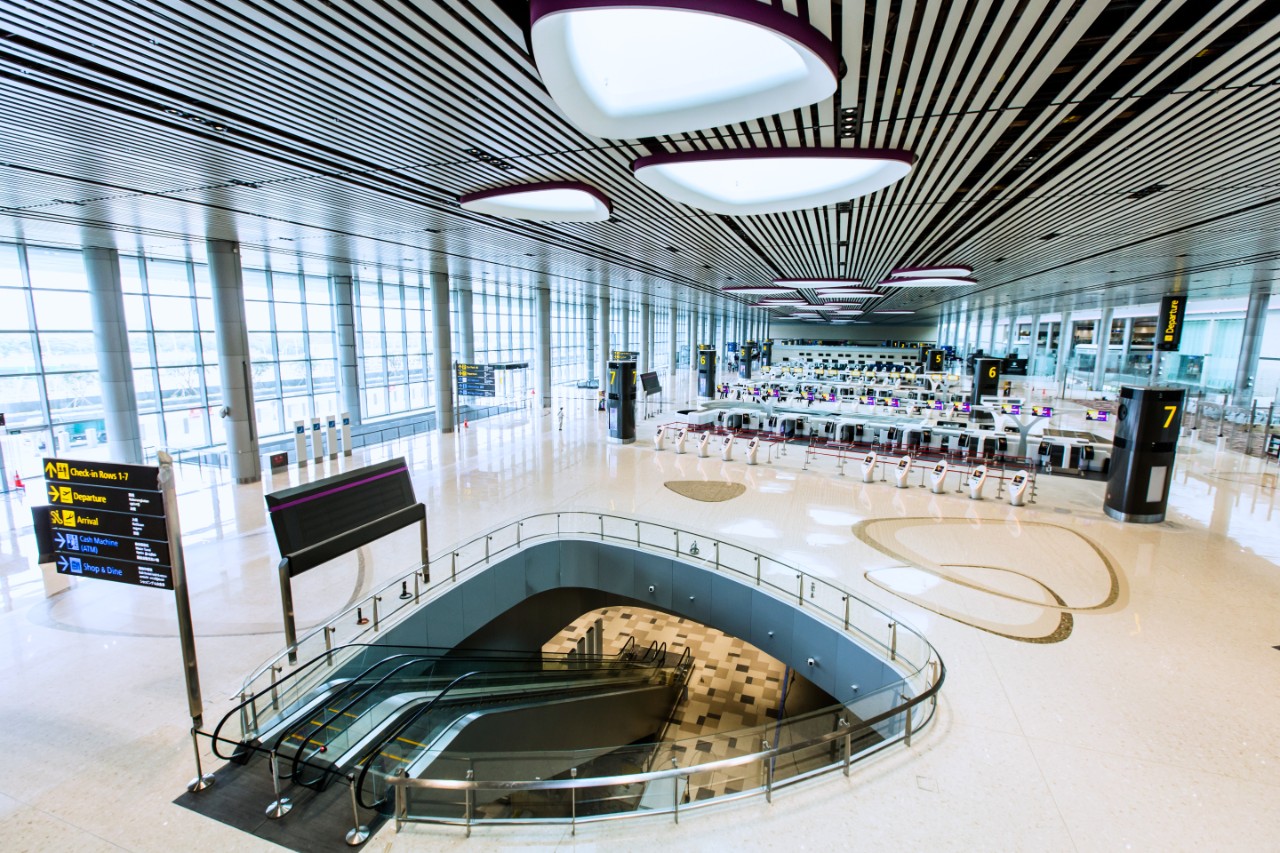New technology at airports promises to dramatically transform the travel experience for passengers.

(Image credit: Changi Airport Group)
By Francis Kan
In the very foreseeable future, a passenger travelling from Changi Airport could possibly walk from the main entrance of a terminal all the way to doors of an aircraft without having to deal with a single airport employee.
This enticing vision of air travel – which removes time-consuming queues and cumbersome security checks – is already a work-in-progress at Singapore’s world-class airport in the soon-to-open Terminal 4 (T4). This new terminal employs artificial intelligence (AI) technologies, such as facial recognition, that allows passengers to bypass manned counters and use more self-service options at each stage.
“The facial recognition technology is so advanced that it can even discern the difference between a pair of twins,” said Steve Lee, Changi Airport Group’s Chief Information Officer.
While self-service options have been rolled out progressively at Changi since 2015, T4 – which is set to open on 31 October 2017 – will be the first to offer a start-to-end automated experience that covers check-in, bag drop, immigration and boarding. The new system is expected to result in manpower savings of about 20 per cent in the long term.
Enhancing the airport experience
From biometrics for passenger check-in and boarding to predictive tools that help minimise flight delays, technology is being used at more airports around the world to improve operational efficiency and make the passenger experience a more seamless and less painful one.Airport security and border-control processes were identified as the biggest pain points by passengers in the 2016 Global Passenger Survey conducted by the International Air Transport Association (IATA).
“In many cases, innovation and technology can vastly improve the experience at the mandatory parts of their airport experience, so much so that it can become a pleasure rather than a pain. The reality is that passengers are happier when they use technology,” explained Sumesh Patel, President, Asia Pacific at SITA, a specialist in air transport communications and information technology.
SITA’s research showed that satisfaction is higher during air travel when self-service technologies are used, particularly at bag tag and collection, and passport checkpoints. Satisfaction is boosted even further when technologies such as mobile services and biometrics are employed.
Airports and airlines are sitting up and taking note. SITA’s 2016 Airline and Airport IT Trends Surveys revealed that predictive tools using AI are likely to be adopted over the coming five or 10 years by industry players. According to the survey, some six per cent of airlines are already trialing AI, another 17 per cent expect to trial the technology in the next five years, and 21 per cent expect to do so in the next six years.
Experts say that airports in Asia-Pacific are in general taking the lead when it comes to using technology to manage the region’s robust passenger growth. The region is expected to lead the growth in global air travel, accounting for more than half of the new passengers over the next 20 years, with China as the world’s largest aviation market by 2029, according to IATA’s 20-Year Air Passenger Forecast.
 Making travel more inclusive
Making travel more inclusive
New technology at airports also aims to improve the travel experience for the elderly and people with disabilities. Solutions such as automated check-ins, for instance, mean that there is no need for them to check in physically in the airport or even online.
While there are still challenges, such as few standardised regulations, they are being worked on. Vinoop Goel, Regional Director, Airport, Passenger, Cargo & Security Asia Pacific at IATA, said that they are “working with governments to standardise regulations where it comes to travellers with disabilities so that there is less confusion for passengers and smooth facilitation for them.”
Challenges aside, industry players expect technology to continue to improve air travel for passengers. Changi Airport’s Mr Lee, for instance, believes that using biometrics to authenticate a person’s identity can be used for a wide range of applications beyond just facilitating the travel process, such as locating a child who gets lost at the airport.
Indeed, beyond self-service options, the processes being tested at T4 include security screening, GST refunds, baggage claims and ground transport, as well as passenger and baggage transfers.
Coupled with other technologies such as robots – which already carry out tasks such as cleaning and carrying luggage at Seoul’s Incheon airport – and self-driving cars, the longer-term picture for air travel is a truly exciting one.
As Sumesh explained, “Imagine arriving at the airport in your self-driving car, having your bag collected by a robot, presenting your face to a camera to get yourself through all the check points and boarding a plane. And all you have to worry about is what to buy, do or eat at the airport before your flight. These things are coming, it is only a matter of time.”
source: https://tinyurl.com/ych5k8kt

